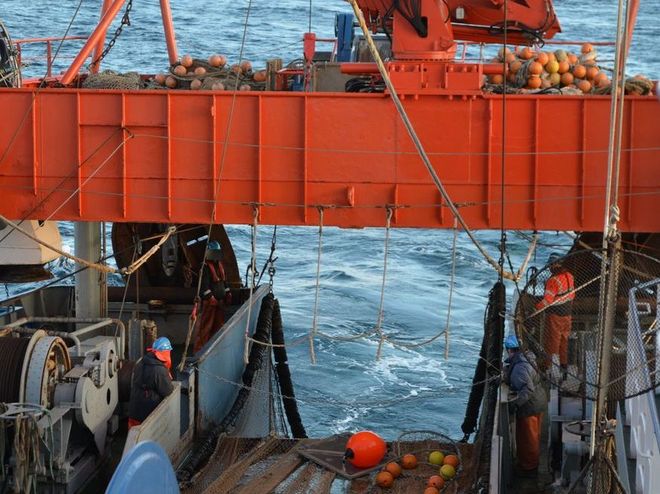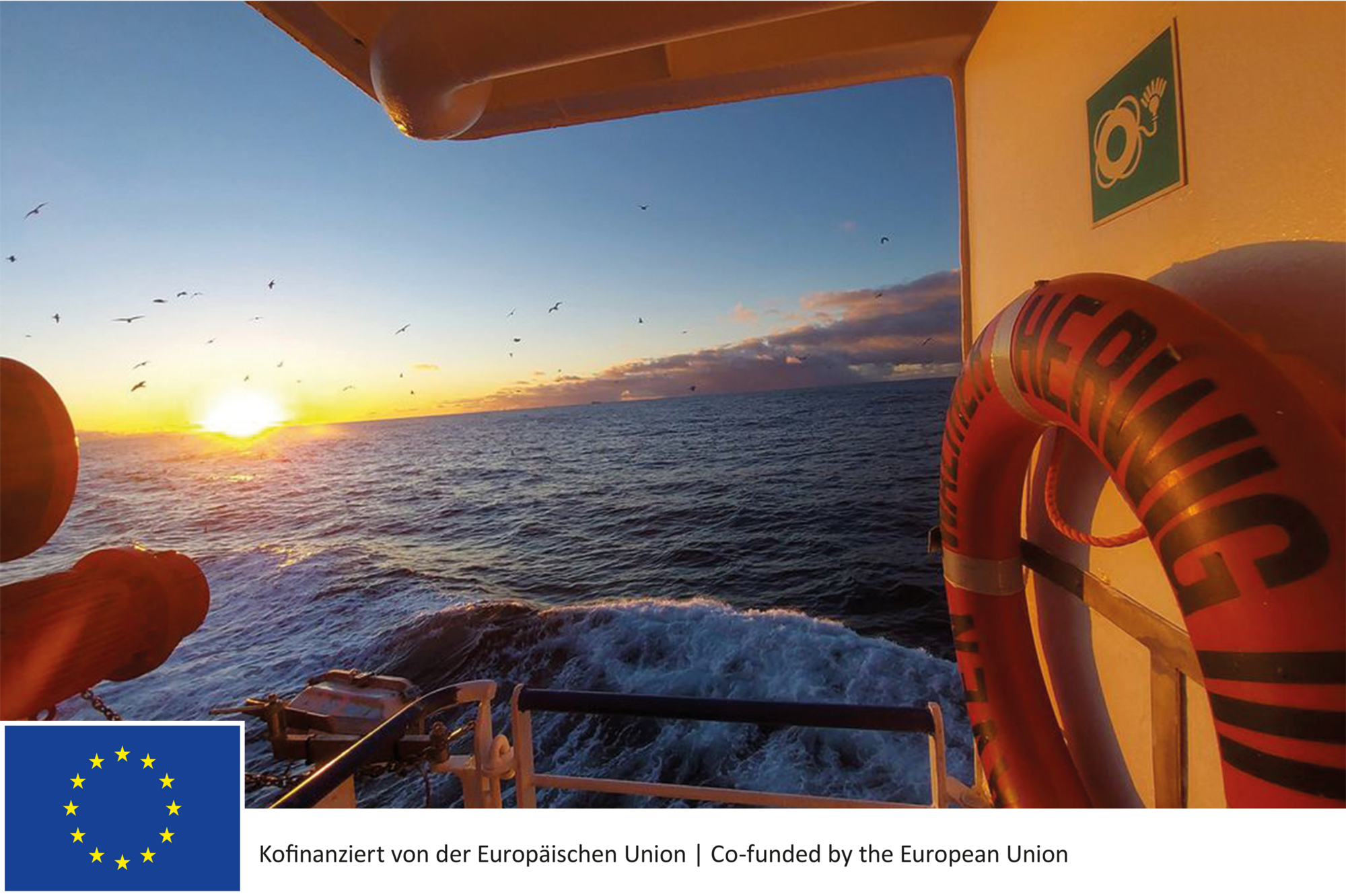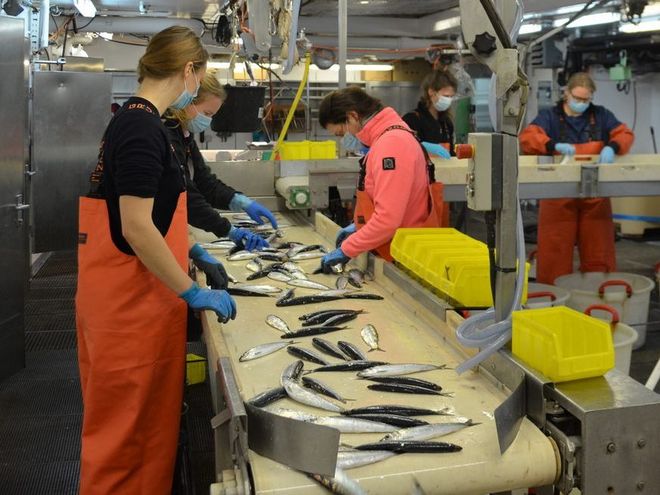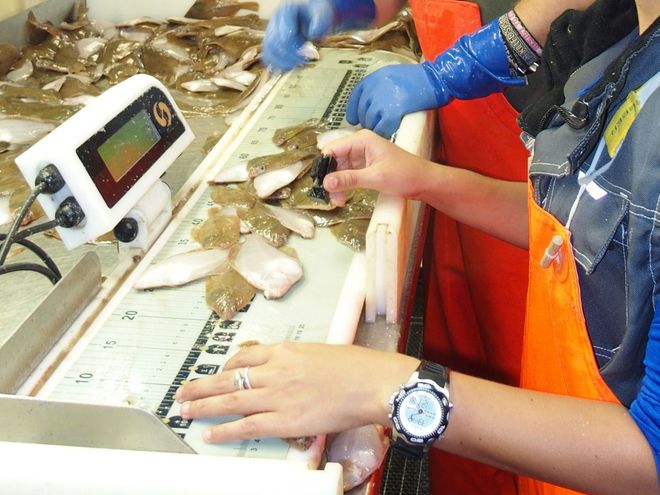Fish inventory in the North Sea (IBTS)
The International Bottom Trawl Survey (IBTS) in the North Sea
How much fish is there in the North Sea? Is climate change affecting fish stocks? Scientists at the Thünen Institute of Sea Fisheries have been asking and answering these and other questions by sampling fish and plankton from a research vessel every winter and summer for more than 50 years.
Background and objectives
The North Sea IBTS is the oldest bottom trawl survey coordinated by the International Council for the Exploration of the Sea (ICES).
The objective is to collect standardised data on an annual basis. This is done by conducting standardised bottom trawl surveys in the 1st and 3rd quarter of each year.
IBTS started in the 1960s as a data collection focusing on juvenile herring. Over the years, it has evolved into a survey of the entire North Sea fish community and an investigation of changes in the area's ecosystem. The catch results of all standardised net catches (so-called hauls) form the basis for estimating stock sizes and the strength of juvenile year classes of important commercial stocks.
We compile these data for Germany within the EU Data Collection Framework (DCF) as a contribution to the International Bottom Trawl Survey (IBTS). This information is used within ICES to provide scientific advice on catch levels.
The main objective of IBTS Q1 (January-February) is to determine the distribution and relative abundance of juveniles of the main commercial fish species and to determine the abundance and distribution of late larval herring.

IBTS Q3 (time window July to August) is mainly used for data collection for stock assessments of the target species haddock, cod, saithe, whiting, Norway pout, herring, sprat, mackerel and plaice in the North Sea and Skagerrak.
![[Translate to English:] IBTS Q3: Sea map of sampling areas](/media/_processed_/5/d/csm_IBTS_Q3_Karte_von_der_Beprobung_d63b8db397.png)
Approach
Each year, research vessels from up to seven nations participate in the IBTS, including Germany, France, the Netherlands, Denmark, Sweden, Norway and the United Kingdom (England and Scotland). They collect important biological data almost simultaneously on their vessels using standardised bottom trawl catches.
The main focus lies on temporal and spatial changes in (a) the distribution and relative abundance of fish and fish communities and (b) biological parameters (e.g. length, weight, age, sex distribution, fertility).
At each monitoring station, the environmental parameters of temperature, salinity and oxygen will also be measured at different depths.

In addition to the standard survey programme, there is also room for special projects such as the monitoring of marine mammals and birds, and even the collection of data on waste, so-called "marine litter". In addition, when important species such as sharks, rays and some invertebrates (e.g. Norway lobster, crabs, squid and scallops) are caught, their biological data are collected as well. For many of these species, the IBTS is an important source of data because of its extensive coverage. This is also the case for "marine debris", which unfortunately is nowadays found at almost every station.
Work on board takes place around the clock. During the winter IBTS (= IBTS Q1), in addition to the daytime work, an additional night programme focuses on fish larvae, especially herring larvae. The distribution and abundance (=density) of large herring larvae (>18 mm, so-called 0-year-olds) is estimated from plankton catches with a 2 m ring net (MIK). The quantity of herring larvae caught makes it possible to calculate or estimate the expected recruitment to the North Sea herring stock - also known as annual recruitment - in the coming years.

The smallest fishing gear on board also catches other exciting creatures. The ring-shaped opening of this MIKey-M net has a diameter of only 20 cm and sits on top of the frame of the large plankton fishing gear - the so-called MIK. The special feature of the net is its small mesh size. This means that even tiny organisms in the plankton, such as fish eggs, small fish larvae and crustaceans, but also interesting larvae of other sea creatures, e.g. starfish, can be caught in the net.
We submit the data we collect to the International Council for the Exploration of the Sea (ICES). Within the framework of the International Bottom Trawl Survey Working Group (IBTSWG), the data is used to provide scientific recommendation for catch levels. This ICES working group also works on standardising the fishing gear and methods used in the IBTS.
Links & Downloads
- ICES International Bottom Trawl Survey Working Group (IBTSWG)
- ICES Working Group on the Assessment of Demersal Stocks in the North Sea and Skagerrak (WGNSSK)
- IBTS-Manual with details on sampling and much more
- Sea Blogs - Blogs describing expeditions to the North Sea, the Baltic Sea and the Atlantic

![[Translate to English:] [Translate to English:]](/media/_processed_/7/1/csm_IMG_7977_large_1defaf5de1.jpg)


















